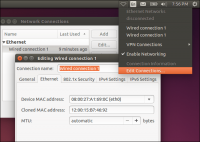8 Common Networking Disasters (And How To Avoid Them)
Most people engage in networking in the hopes of landing a new job or business opportunity but, experts say, many approach it the wrong way.
Few people understand that networking is not a job interview, says Heidi Parsont, president and CEO of Torchlight Hire LLC. Most people have overly ambitious goals for networking, and forget that it takes time and patience to develop relationships, she says.
“Networking is a permission-based activity,” Rasheen Carbin, cofounder and chief marketing officer for nsphire.com, a job-matching site for employers and employees. “The more buy-in you get from people before you actually ask for something, the more likely it is you’re going to get that ask.”
Here seven job coaches and recruiters outline eight disastrous networking mistakes and how to avoid them.
1. Trying To Collect As Many Business Cards As Possible
Too many people go to networking events with the goal of collecting piles of business cards, dominating every conversation and wowing everyone with their qualifications and experience, Carbin says. In reality, these actions turn most people off, making them less likely to talk with you, he says.
Instead of pushing your business card on someone as soon as you shake hands, take a minute to ask them about themselves and establish some common ground, says career coach Andrea Raggambi. Talk about something that isn’t job related, such as how their day was or if they’ve ever been to the restaurant where the event is being held. It’s better to have three quality conversations at a networking event then to walk away with 30 business cards from people you didn’t take the time to get to know, says Mary Olson-Menzel, president of MVP Executive Search and Development.
2. Being Too Casual
Whether you are at a networking event or meeting someone for coffee, always keep it professional. That means, if you’re at an after-hours networking event, limit yourself to one drink, Olson-Menzel says. “There have been times,” she says, “when I’ve met someone at a networking event, but they lost all credibility because they had too much to drink.”
Keep the discussion professional, too. Olson-Menzel recalls a contact that was referred to her by a trusted friend. When she initially spoke with the contact on the phone, she thought he sounded a bit too eager, but she had a position available that she thought he might be right for, so she agreed to meet with him in person. When they did meet, he told her, “If this job doesn’t work out, I’d like to see if we can pursue a relationship in other ways.” Needless to say, he didn’t get the job or a date.
3. Sending A Resume Without Being Asked
When you send an introductory email, it’s tempting to attach your resume, but Danielle Beauparlant Moser, managing partner at Blended Learning Team LLC, and coauthor of FOCUS: Creating Career & Brand Clarity, recommends waiting until your contact asks for it.
Moser had a client who spent months trying to get a meeting with a senior vice president at a firm he wanted to work for. He finally found a friend who could provide an introduction to the SVP’s boss, the company’s chief operating officer. He sent the COO an introductory email and posed a few questions that he knew only the SVP could answer. His hope was the COO would forward his email to the SVP he wanted to meet but, says Moser, he made a critical mistake. He attached his resume to the email.
Instead of forwarding the email to the SVP, the COO said he would forward it to human resources, and Moser’s client never heard from the company again. “Sending your resume deflects from the conversation you are trying to have and shuts the door, especially if the company has no openings for someone at your level,” Moser says.
Carbin agrees that sending your resume in an introductory email is “short of passive aggressively asking for a job or their help. If I want to help you, I’ll ask for your resume but, if you send it to me without my permission, it feels forced.”
4. Making Meeting Up Inconvenient
Offer to set up a meeting at a time that works for the person you are trying to meet with, recognizing that might be two months from now, and offer to go to their office and bring them a coffee or tea of their choice, suggests Marcia Ballinger, principal and cofounder of executive search firm Ballinger Leafblad Inc., and coauthor of The 20-Minute Networking Meeting. “Make it as easy as possible for the person to say yes,” she says.
Don’t expect the person you want to meet with to track you down, says Lorna Hagen, senior vice president of people operations at OnDeck. A recent college graduate requested a meeting with Hagen through a mutual contact but, when the initial meeting was postponed, the college graduate ghosted Hagen, even though Hagen’s assistant reached out repeatedly. As a result, the college graduate burned a bridge with Hagen and the person who initially reached out to Hagen on the graduate’s behalf.
5. Being Unprepared For Your First Meeting
Most people take too long to tell their story, Ballinger says, or are unable to articulate the goal of the meeting. Have a tight narrative that highlights your experience and your future goals. Come prepared to run the meeting, says Ballinger, and never ask a question that can be easily answered on the Internet.
In addition to bringing a copy of your resume, you might want to create a one-page document that sums up your experience and the opportunities you’re looking for, says Parsont. Include your name, contact information, core competencies, a condensed job history listing the companies you’ve worked for, titles and dates, and a list of target companies you’re interested in working for in the future.
6. Misusing LinkedIn
LinkedIn has made it possible to connect with anyone, but many people use the site wrong. The number one mistake, says Hagen, is failure to provide context when connecting through LinkedIn. Her biggest pet peeve: People who send an auto-generated note that reads: “I’d like to add you to my professional network on LinkedIn.” Hagen says she ignores those requests because she wants to know who you are, how she knows you, and why she should connect with you.
Similarly, if you ask a LinkedIn connection to provide an introduction to someone, make sure the person you are asking for the introduction is someone you’ve met with more than once and you actually know, Raggambi says. You also want to be clear about why you want to meet that person.
7. Not Following Up After Meeting
After you meet someone, it’s best to follow up within 24 hours and not just through Linkedin. Send them an email saying you enjoyed meeting them and you hope to see them in the future, Olson-Menzel says. Then a week later, send them a handwritten note reiterating that you enjoyed meeting them and that you look forward to keeping in touch.
To help the contact remember you, reference something funny or interesting from your conversation, Raggambi suggests, adding that it helps to jot down a quick note on the back of their business card immediately after you meet someone.
8. Not Offering Your Help
One of the most important things you can do when networking is offering your help instead of asking for help. At the end of the conversation, Moser recommends asking, “What can I do for you?” That simple question, she says, shifts the relationship.
“Until you seem genuine and show a desire to support your peers and colleagues, you won’t gain someone’s trust or get what you need from them in a genuine way, and your resume won’t go very far,” Raggambi says.
Fast Company , Read Full Story
(40)














